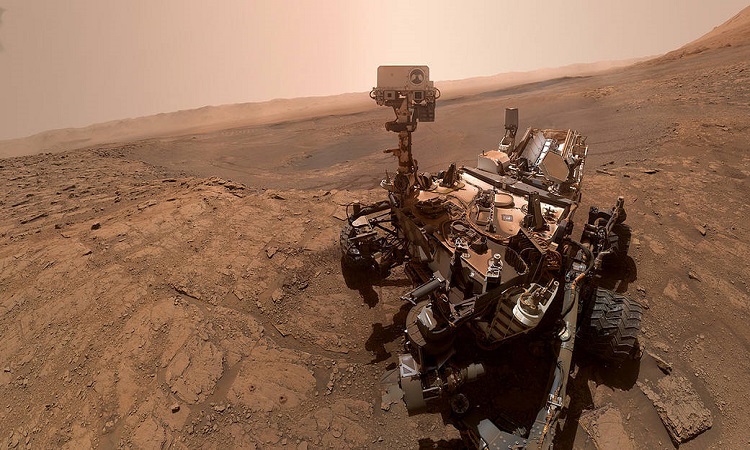On Mars, the data collected by the Curiosity rover show for some years irregular variations in oxygen levels. For the moment, the researchers have no explanation.
On Mars since 2012, NASA’s Curiosity rover evolves in the Gale crater. One of his instruments, a spectrometer called SAM, aims to inspect the surrounding air in order to assess its composition. Thanks to him, we know that the planet’s thin atmosphere is mainly composed of CO2, nitrogen, argon, carbon monoxide and oxygen.
The levels of these compounds vary during a Martian year. Especially during the winter, when the air pressure is lower, and during the summer, when it goes up. Nevertheless, for argon and nitrogen, these fluctuations remain globally regular over time.
Recently, mission leaders have been trying to find out if it is the same for oxygen. And surprisingly, this has not been the case.
Strange fluctuations
By analyzing the SAM data, the researchers found an increase of about 30% in oxygen concentrations in spring and summer compared to what was expected. They noticed the same thing in winter, with a very significant drop in oxygen levels. These patterns are repeated each season, but with different amounts of oxygen each time.
“It’s hard to explain that,” says Melissa Trainer of NASA’s Goddard Space Flight Center. The fact that the behavior of oxygen is not perfectly reproducible each season makes us think that it is not a problem related to the dynamics of the atmosphere. So there must be a chemical source and a sink that we have not yet taken into account. “
Same thing for methane
For now, it is difficult to explain these results. But there could be a parallel with Curiosity’s recent methane measurements. In the Gale crater, the average concentration of this gas is around 10 parts per billion (ppm). But a few months ago, the rover spotted a “peak” of methane, with an estimated concentration of 21 ppm.
In subsequent analyzes, Curiosity noticed other fluctuations in methane concentrations in the middle of the crater. But as with oxygen, no regular pattern can be drawn.
For some researchers, it could be a biosignature of life. Indeed, much of the methane on Earth is produced by living beings. But geological processes could also be at work. The impact of solar rays on certain types of rocks can indeed release methane. These same chemical reactions could then also explain these irregular releases and removals of oxygen.




